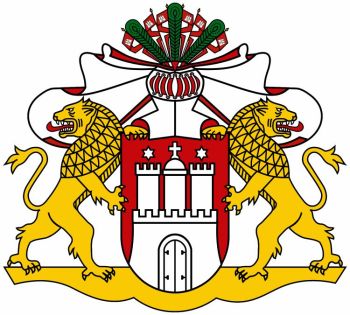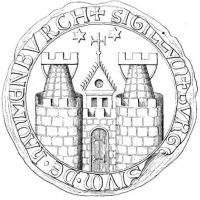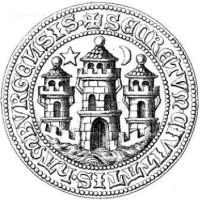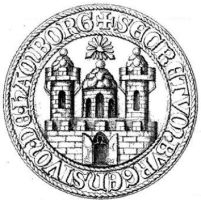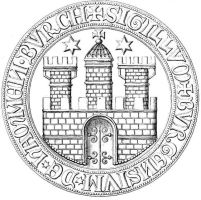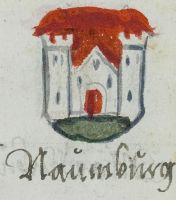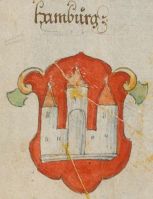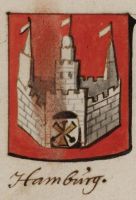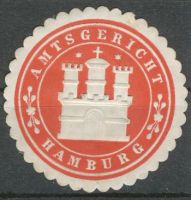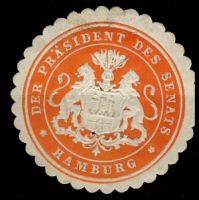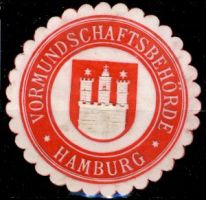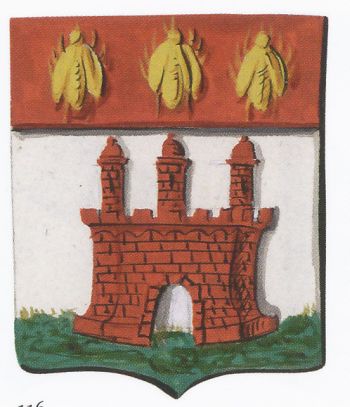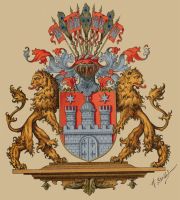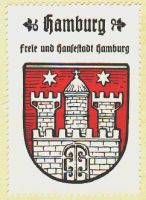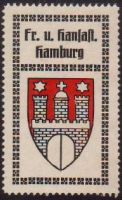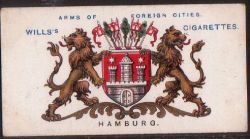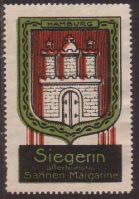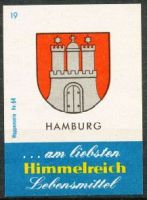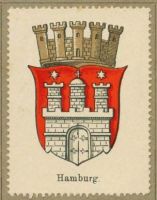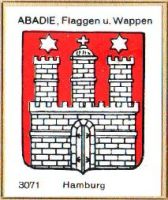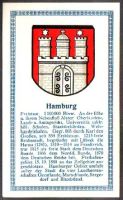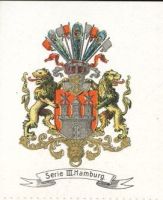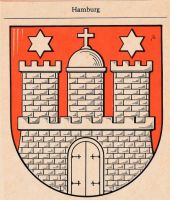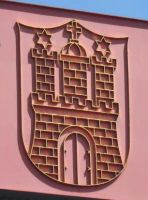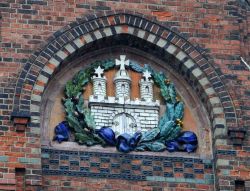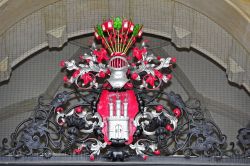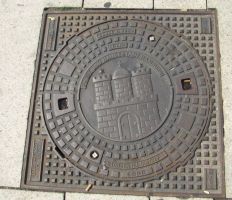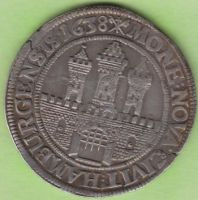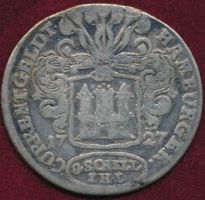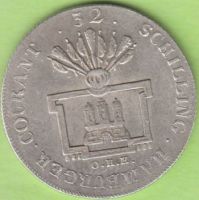Hamburg
|
Country : Germany State : Hamburg
|
Origin/meaning
Hamburg developed around a small fortress, used by the people as a refuge in the early Middle Ages (6th-9th century). In 831 an Archishop of Hamburg was mentioned, in 835 already an Archbishop. It is not quite sure when the village became a city, probably in the early 12th century.
In 1188 the new-city or Neustadt was founded by Count Adolf of Schauenburg-Holstein. In 1215 the two cities were united under the counts of Holstein, and since 1461 the Kings of Denmark. Although the Kings of Denmark were the official overlords, the city was practically independent.
The oldest known seal dates from 1241, on which is shown a castle made of three towers. The cross on the middle tower as well as the two stars are already present. The middle tower could thus indicate the largest church, the Holy Mary Church. The stars are aslo a common symbol for the St. Mary. All other seals of the city show the castle, the shape, however, differs between the seals. On some smaller 13th -14th century seats the castle is standing on a river and the stars are replaced by a half-moon (crescent). The castle also appears on coins minted in the 13th century.
Image gallery
The arms in a 16th century manuscript
The arms in the Wapen- en Vlaggenboek van Gerrit Hesman (1708)
In 1510 the city became an Imperial city, in 1618 a free city (which Denmark did not recognize until 1768). In 1815 Hamburg joined the German Empire, and since 1919 it is one of the states of Germany.
In Napoleonic times the colours were inverted (a red castle on a silver shield), as the addition of a red chief with the golden bees (the symbol of a city of the first order) did not fit with a red shield.
| Arms of Hamburg during Napoleonic times (granted 13-06-1811) |
The whole arms as they are now were first used officially in 1695 and were officially granted in 1835. The only municipality is Hamburg, after the merger of 33 municipalities in 1937.
The helmet with the the feathers already appeared in the 16th century and are derived from the counts of Holstein. The lions appeared in the 17th century.
As far as known the colours have always been a silver castle on a red shield.
Image gallery
The arms by Hupp in the Kaffee Hag albums +/- 1925
The arms in the Wappen-Sammlung (1900)
The arms in the Abadie albums
The arms in a 1930s album
The arms in a German album +/- 1910
The arms in a 1936 album
The arms on a matchbox label
The arms in an album from 1968
The arms in the city
(more images wanted, if you have an image of the arms in the city, please contact me):
Image gallery
The arms on coins of the city
(images from auction sites)
Image gallery
Literature: Stadler, 1964-1971, 8 volumes; Gaedechens, 1855
This page is part of the German heraldry portal |
Heraldry of the World |
|
German heraldry:
|
Selected collector's items from Germany:
|
Contact and Support
Partners:
Your logo here ?
Contact us
© since 1995, Heraldry of the World, Ralf Hartemink 
Index of the site
